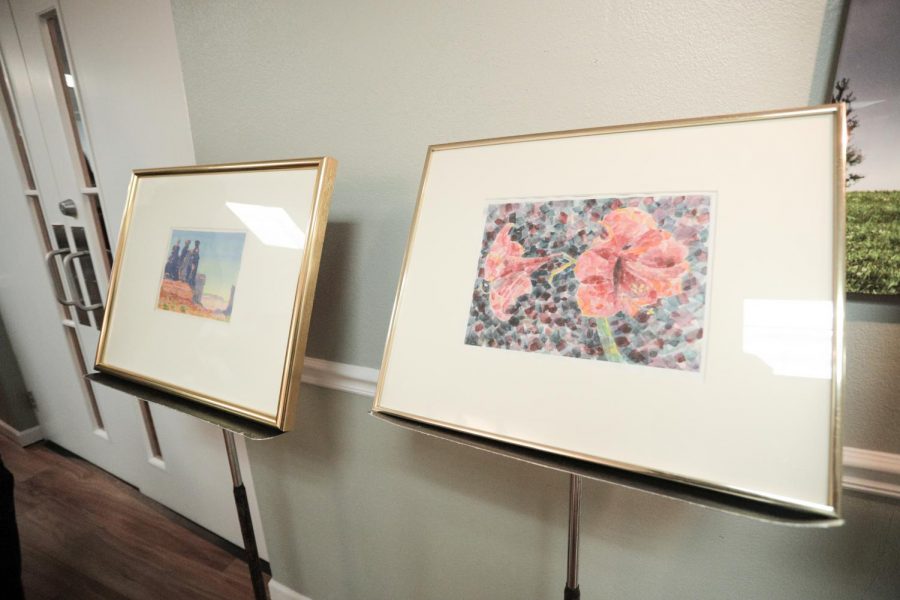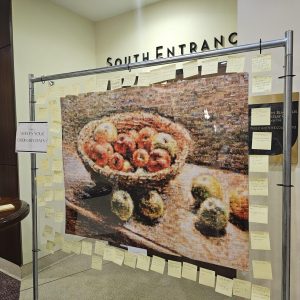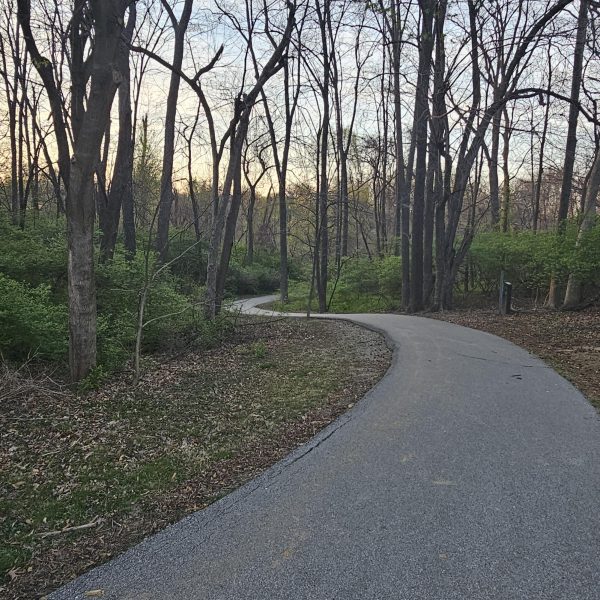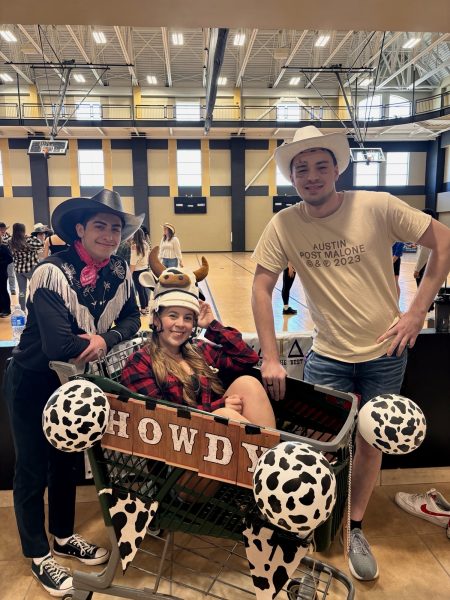Art professor John Wehmer, 92, left legacy as kind mentor
Photo by James Tananan Kamnuedkhun
Proceeds from John Wehmer’s art benefited the John Wehmer Memorial Endowed Art Scholarship. Many of the paintings displayed at his memorial featured scenes of the American Southwest.
March 8, 2020
Dozens of people gathered in the Lindenwood University Cultural Center on Saturday to remember the life of John H. Wehmer, who was a Lindenwood art professor for over 30 years.
During the memorial, people who knew Wehmer spoke about their memories of his positive spirit and caring personality. Some attendees knew him throughout his life, but Wehmer left a strong impression on others who only knew him for a short time.
Wehmer, a professor emeritus of art, died at the age of 92 on Dec. 30, 2019.
He was born on June 17, 1927 in Normandy, Missouri, in north St. Louis County. His younger brother, Norman Wehmer, spoke about growing up with John in a five-sibling family.
“We had fun. We really had everything but money,” Norman said. “That’s the way it was in the Depression.”
After graduating from high school, John Wehmer served in the Navy during World War II, then attended Washington University under the G.I. Bill.
During the 1950s, Wehmer taught in a one-room school in Washington County, Missouri. Norman said the students loved him and held reunions with him each year until today.
Lindenwood created an endowed art scholarship in John Wehmer’s memory. Twenty of his watercolors were on display during the memorial. These paintings could be purchased for a $150 donation to the memorial scholarship fund.
But the small still-life and Southwestern landscape paintings displayed on Saturday were not Wehmer’s only field of work. He was also known for his abstract expressionism, and his work was exhibited regularly, including at the St. Louis Art Museum.
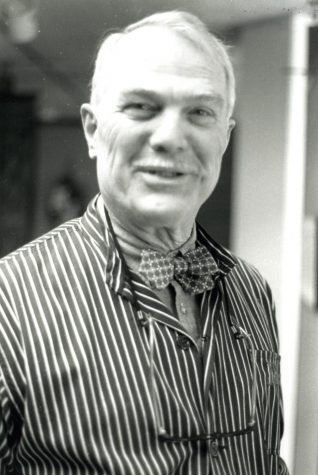
Photo from Lindenwood University Advancement and Communications.
Carlyn Romeyn, Wehmer’s friend and student, said he had a strong appreciation of beauty and small details, in both life and in art.
“He saw the unique part of nature that people miss,” Romeyn said. “If you just look at something you’ll miss it, but if you really stop and try to see it [you will], and that’s what he taught me more than anything.”
Though he was tall and had a physically imposing appearance (His colleague Hans Levi said he had the “body of a linebacker,” though he never played football.), Romeyn said Wehmer had a very approachable personality and respected everyone.
“He made friends wherever he went, because he was so mild-mannered, he genuinely loved talking to all kinds of people,” Romeyn said.
Romeyn, who graduated from Lindenwood in 1964, said Wehmer influenced her because he was always patient and willing to help people learn.
After Wehmer got a master of fine art degree at the University of Illinois Urbana-Champaign in 1959, he taught at Lindenwood until 1992.
Because the faculty was small, Romeyn said he taught a variety of classes. He also took students on trips to Mexico to study Mesoamerican art.
Art professor Grant Hargate said Wehmer’s way of looking at him over his glasses intimidated him when he first met him. However, Hargate grew to love him, and eventually adopted his habits of wearing cardigans and glasses with a lanyard, even though he thought it was uncool at first.
Hargate said he remembered Wehmer’s “sense of backbone” the most.
“John would go head to head,” Hargate said. “He was not afraid to tell somebody, ‘I’m trying to make a point here. This is my turn to talk.'”
Ray Scupin, a retired professor of anthropology and international studies, said Wehmer was involved in leading faculty groups, and his students were enthusiastic about learning from him.
Wehmer spent his last 50 summers in a cabin in Colorado, where he created many works of Mount Meeker.
“Each one is different. There’s hundreds of them. Sketches and full-out paintings,” Romeyn said.
Wehmer’s ashes were displayed in an urn made of orange fiestaware, a ceramic material Romeyn said he enthusiastically collected.
Romeyn, now an art history professor near Atlanta, would talk with him on the phone about once a month. She remembers their last conversation, when she told him she was going to visit Oaxaca, Mexico.
“I could picture him on the other end of the phone; he said ‘Oaxaca, oh my gosh! My favorite place! You have to call me when you get back,’” Romeyn said.
Romeyn looked forward to telling him about her trip, but she learned when she got back that he had passed away.
“I’m sorry I didn’t get to have that follow-up conversation about Oaxaca,” Romeyn said. “I miss him dearly.”
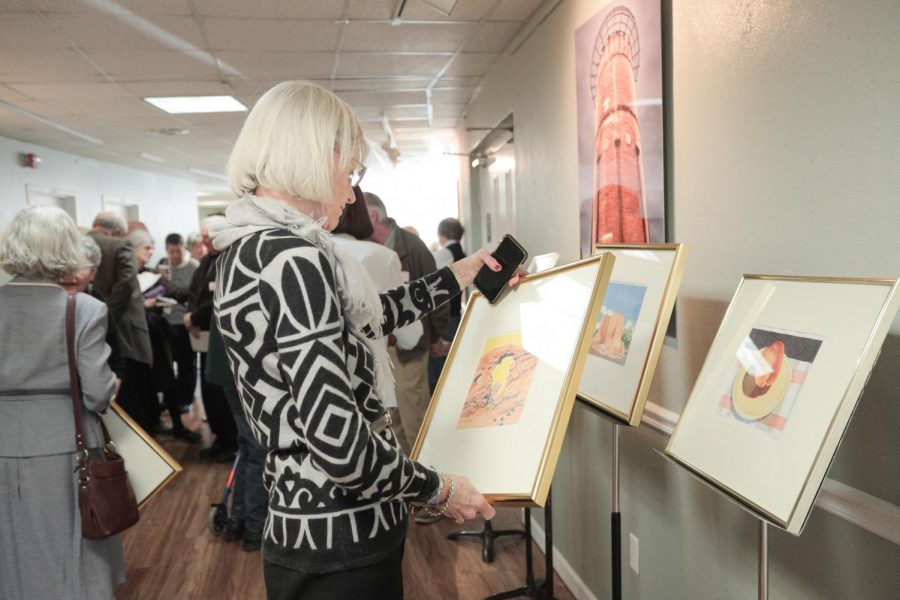
Alumna Carlyn Romeyn, one of John Wehmer’s students who stayed in touch with him throughout his life, looks at one of his works at his memorial.



